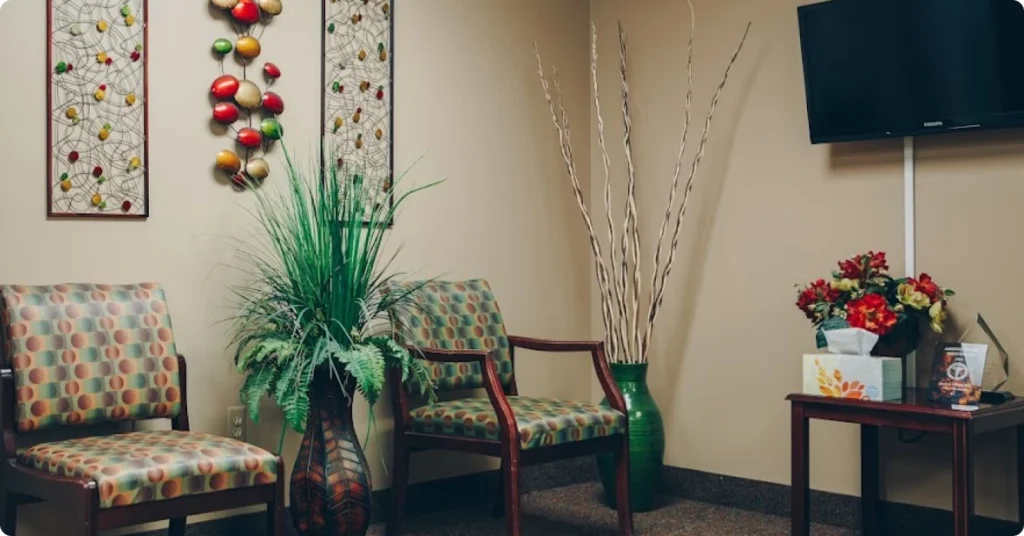Regenerative medicine offers patients a chance to address chronic pain, joint stiffness, and injuries that have not responded to traditional treatments. Many individuals seek these advanced therapies to improve mobility, reduce inflammation, and support the body’s natural healing processes without the need for surgery. Our experienced team can help those struggling with sports injuries, arthritis, or age-related wear and tear regain comfort and function, making regenerative medicine an appealing option for anyone looking to restore their quality of life.

Table of Contents
Regenerative medicine procedures stimulate a healing and tissue growth response inside damaged tissue using several techniques. These treatments harness the body’s own repair mechanisms to restore function and reduce pain in affected areas. They are often used for conditions such as joint degeneration, tendon injuries, and chronic inflammation, offering a non-surgical alternative for patients seeking long-term relief.
Prolotherapy uses a concentrated dextrose (sugar-based) or saline (salt-based) solution that is injected into the area of degeneration, such as joint arthritis, tendon/ligament/muscle tearing, or spinal disc. The solution acts as an irritant, which promotes healing by stimulating the body to provide additional blood supply to the injured area. This additional blood flow brings the nutrients and repair cells that lead to regeneration and healing of the injured tissue. Of the regenerative treatment options, prolotherapy requires more procedures. The average number of treatments is 3-5, with procedures spaced 6 weeks apart.
PRP stimulates a more intense healing response than prolotherapy. Instead of injecting a concentrated dextrose solution, we draw your own blood, isolate the portion that is responsible for stimulating growth and healing (the platelet-rich plasma portion), then re-inject the growth solution into the area of degeneration.
Platelet-rich plasma (PRP) consists of concentrated platelets and growth factors that promote healing and regeneration of injured tissues. PRP is derived from your own body and is 100% natural. PRP injections are an increasingly popular alternative to surgery and addictive medications. Although still investigational, multiple studies demonstrate its effectiveness for patients of various ages and conditions.
To harvest PRP, a small sample of blood is drawn into a specialized collection system and then centrifuged at high speeds to isolate the growth factors and platelets. Because the blood drawn is used for a therapy treatment on the same patient, there is no risk of a transmissible infection or allergic reaction. These therapies are a safe, nonsurgical treatment option for most chronic pain conditions, wound care, and aesthetic abnormalities.
Once the PRP has been prepared, it is carefully injected into the targeted area of injury or degeneration using precision guidance to ensure accuracy. Patients may feel mild discomfort or a slight pressure sensation during the injection, but the procedure is generally well-tolerated and performed in a comfortable, clinical setting. The PRP delivers concentrated growth factors directly to the damaged tissue, jumpstarting the body’s natural healing response and promoting tissue repair over the following weeks.
The healing cells promote regeneration (healing) of chronic injuries, sports injuries, or other natural degenerative processes. The average number of PRP treatments is only 1-2, making them much more time- and cost-effective for patients than prolotherapy.
After PRP therapy, most patients can return to normal activities within a day, though mild soreness or swelling at the injection site is common for the first 24-48 hours. The body’s healing response begins immediately, but it can take several weeks to notice significant improvements in pain, mobility, and tissue regeneration. Recovery is generally a gradual process, allowing patients to resume their daily routines while supporting the regenerative process.
To optimize results, follow these aftercare tips:
Do not touch the treated area for the first 24-48 hours following the injection.
Apply ice to the injection site as needed to reduce discomfort or swelling.
Avoid taking anti-inflammatory medications, as they can interfere with the healing process.
Gradually reintroduce physical activity based on your provider’s guidance.
Stay hydrated and maintain a healthy diet to support tissue repair.
Attend all recommended follow-up appointments to monitor progress and determine if additional treatments are needed.
Regenerative medicine can be an effective treatment option for individuals dealing with chronic pain, joint stiffness, or injuries that have not responded to traditional therapies. By stimulating the body’s natural healing processes, these treatments help restore function, reduce inflammation, and improve overall mobility. Patients of various ages and activity levels may benefit, from athletes recovering from sports injuries to older adults managing age-related joint degeneration.
Conditions that can be treated include:
Arthritis and joint degeneration
Tendon injuries and tears
Ligament injuries and sprains
Muscle strains and chronic soft tissue injuries
Sports-related injuries
Spinal disc injuries
Chronic inflammation and pain
Overuse injuries
The cost of regenerative medicine in St. Clair Shores, MI, ranges from $500 to $3,500 per treatment, depending on the type of therapy, the area being treated, and the number of sessions required. Treatments such as prolotherapy, PRP injections, and stem cell therapy each have different pricing structures based on the complexity and materials used. Insurance coverage for these therapies may be limited, as they are often considered elective or investigational.
The exact cost for your treatment will be determined during a consultation with our providers. During this visit, we will evaluate your condition, discuss your treatment options, and provide a personalized price estimate for the therapy that best meets your needs. This approach ensures transparency and helps you plan for your care while receiving the most effective regenerative treatment.

We combine the best of traditional medicine with innovative regenerative therapies to provide comprehensive care for chronic pain and injuries. Our team utilizes advanced diagnostic tools to precisely assess your condition, enabling us to create a personalized treatment plan that targets the underlying cause of discomfort. By integrating proven methods with modern regenerative techniques, we help patients regain mobility, alleviate pain, and enhance their overall quality of life.
Yes, both PRP injections and prolotherapy are effective for managing pain. PRP works by delivering concentrated platelets and special proteins to the injured area, which help stimulate the body’s natural healing response. Prolotherapy promotes tissue repair by triggering a controlled inflammatory response. These treatments can help alleviate discomfort and enhance function for patients experiencing both chronic and acute symptoms.
The difference between prolotherapy and PRP is that prolotherapy stimulates the body’s healing cells to target the area of degeneration, whereas PRP takes your healing cells, concentrates them, and then directly injects them into the areas of degeneration. PRP is a much stronger stimulus for healing, and therefore will require fewer treatments to achieve the same end result much faster. If repeat injections are needed, treatments are generally spaced at least 6-8 weeks apart, allowing for the proper healing cascade to take effect.
Our team is led by Dr. Stephen Wilson, who is a double-board-certified physician with over 25 years of experience in pain medicine. Our doctor ensures an accurate diagnosis and develops treatment plans that address the root cause of pain, rather than just managing symptoms. This level of care enables patients to achieve lasting relief and enhanced mobility.
Yes, regenerative medicine can often be combined with physical therapy to enhance recovery and improve outcomes. Treatments like PRP or prolotherapy work well in conjunction with intramuscular stimulation and other rehabilitative exercises to support healing. This combined approach is particularly beneficial for patients with orthopedic conditions, as it helps restore function, reduce pain, and improve overall outcomes.
If you’re in pain, please call us today! We’re here to help, and our double-board-certified pain medicine physician, Dr. Stephen Wilson, will create a plan to get you back to a pain-free life.

- lorem i.